If you buy through our links, we may earn an affiliate commission. This supports our mission to get more people active and outside.Learn about Outside Online's affiliate link policy
10 Steps to Perfect Sun Salutations

(Photo: Anastasia Shuraeva | Pexels)
In Yoga Journal’s Archives series, we share a curated collection of articles originally published in past issues beginning in 1975. These stories offer a glimpse into how yoga was interpreted, written about, and practiced throughout the years. This article first appeared in Yoga Journal in 2008. Find more of our Archives here.
Surya Namaskar, or Sun Salutation, is a series of postures that warms, strengthens, and aligns the entire body. It serves as an all-purpose yoga tool, kind of like a hammer that’s also a saw and a screwdriver, if you can imagine such a thing.
This sequence might be considered the classic one, but there are so many variations that many modern schools would dispute this. You can alter this particular Sun Salutation by playing with its pace. If you move through the sequence rapidly (by transitioning into the next pose each time you inhale or exhale), you’ll warm up fairly quickly. Start with 5 or 6 repetitions and gradually build to 12 or more or set a timer starting with 3 minutes and gradually increase to 10 or more.
Or try moving slowly and deliberately, and you’ll feel how the sequence becomes a sort of moving meditation. As you practice this way, center your awareness at some point in your body (such as your third eye or your heart) and challenge yourself to keep focusing there for the duration of the practice.
Moving quickly is more stimulating, while moving slowly is more calming. Whichever way you do it, the sequence can serve as either a self-contained minipractice on days when your practice time is short or a warm-up for a longer session.
Before You Begin
Warm Up: Stand in Tadasana (Mountain Pose) with your palms pressed together in anjali mudra (Salutation Seal). Focus for a few minutes on the inner sun at your heart, which is the microcosmic equivalent of the outer sun at the heart of our solar system. Your inner sun represents the light of consciousness, without which nothing would exist—just as our physical world wouldn’t exist without the sun. This inner sun is often compared with the embodied Self, the jivatman or “liberated being.” You might dedicate your practice to this light.
If Sun Salutations are your warm-up for a general practice, move slowly and consciously, gradually building heat. If Sun Salutations are your whole practice, do a 2- to 5-minute Downward Dog as a warm-up.
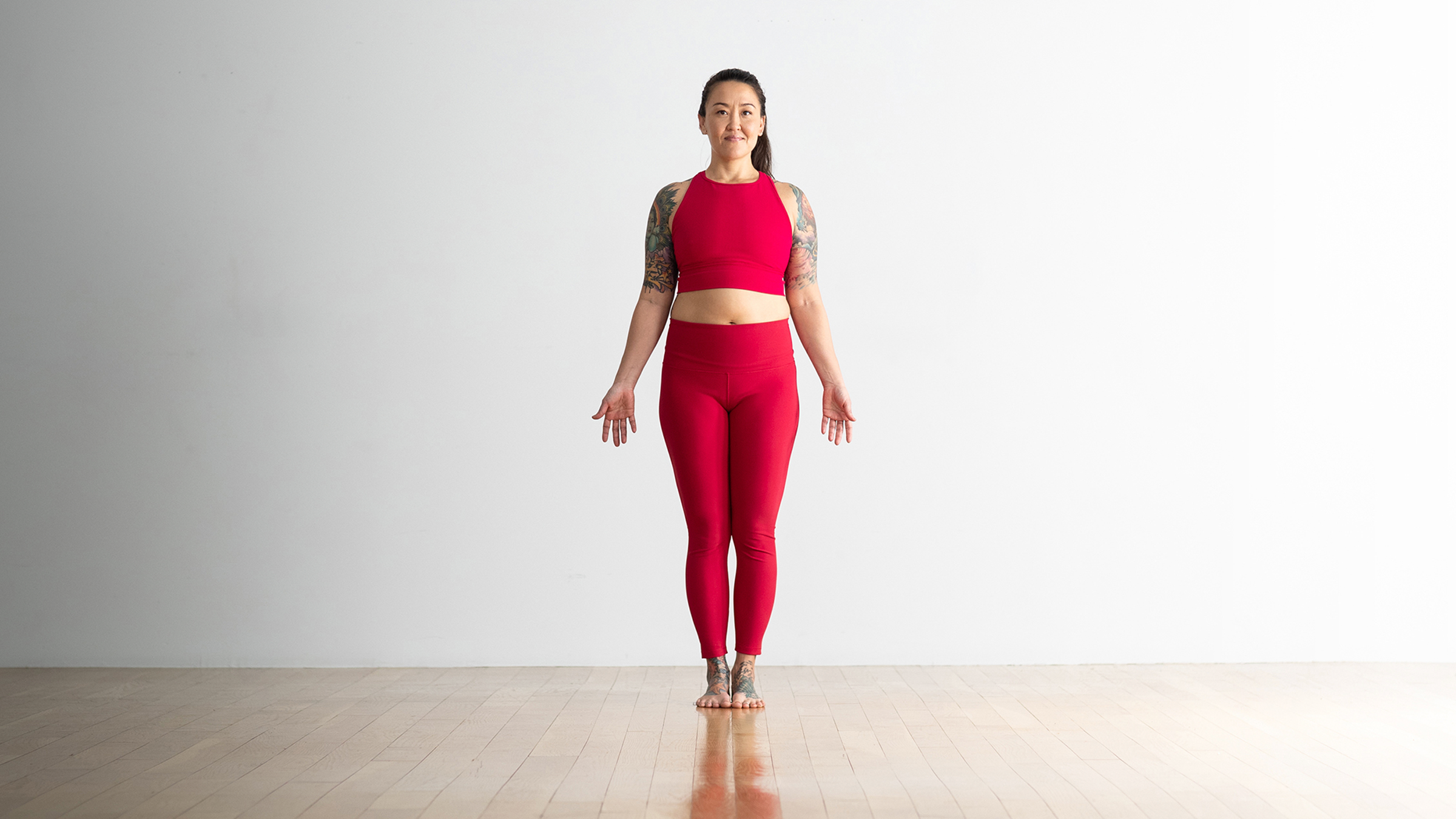
Tadasana (Mountain Pose)
Stand with your feet slightly apart and parallel to each other. Stretch your arms (but not rigidly) down alongside your torso, palms turned out, shoulders released.
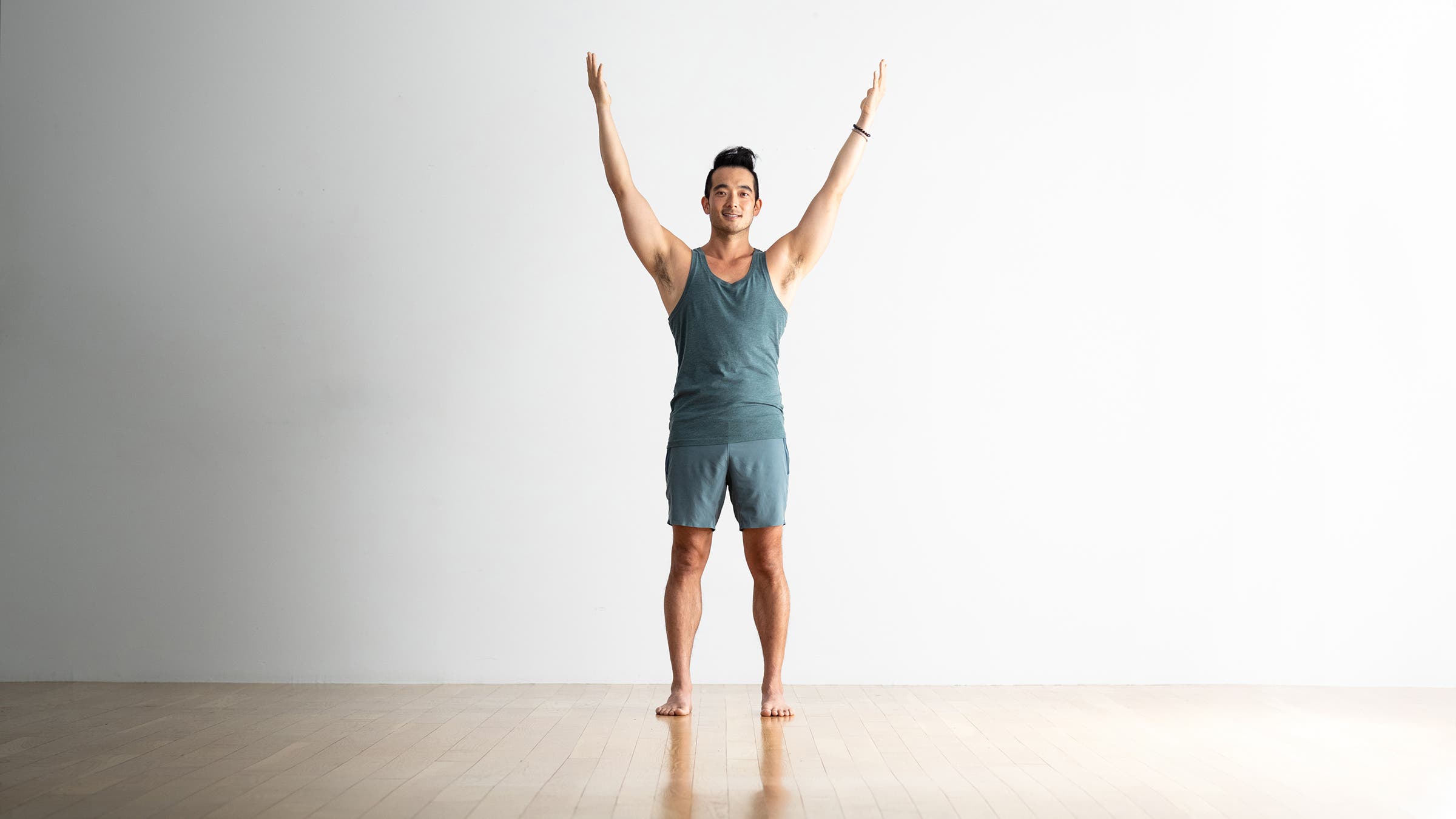 (Photo: Andrew Clark)
(Photo: Andrew Clark)Urdhva Hastasana (Upward Salute)
Inhale and sweep your arms overhead in wide arcs. If your shoulders are tight, keep your hands apart and gaze straight ahead. Otherwise, bring your palms together, drop your head back, and gaze up at your thumbs.
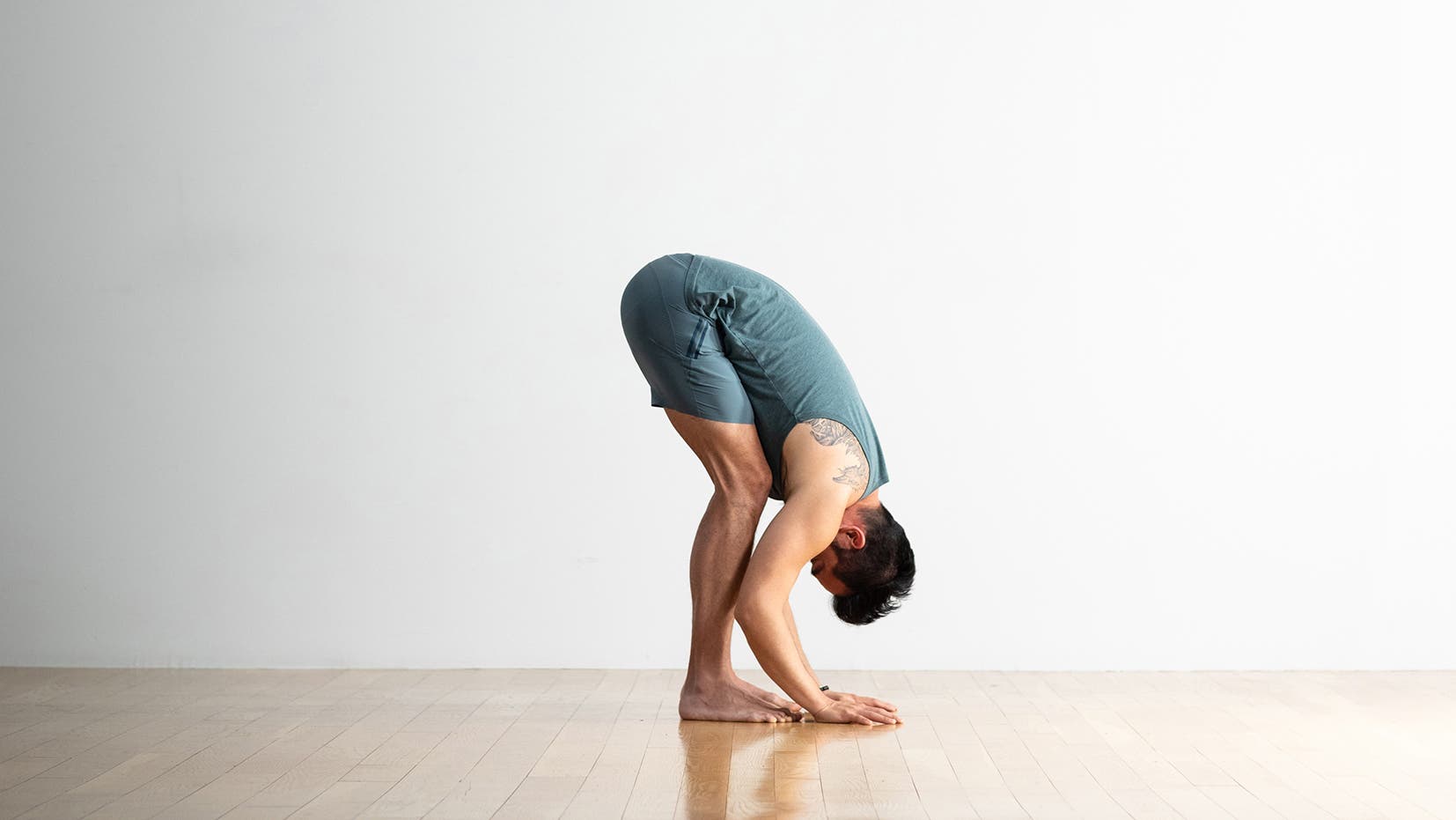
Uttanasana (Standing Forward Bend)
Exhaling, release your arms in wide arcs as you fold forward. Bend your knees if you feel pressure on your lower back and support your hands on blocks if they don’t reach the floor. Release your neck so that your head hangs heavily from your upper spine.
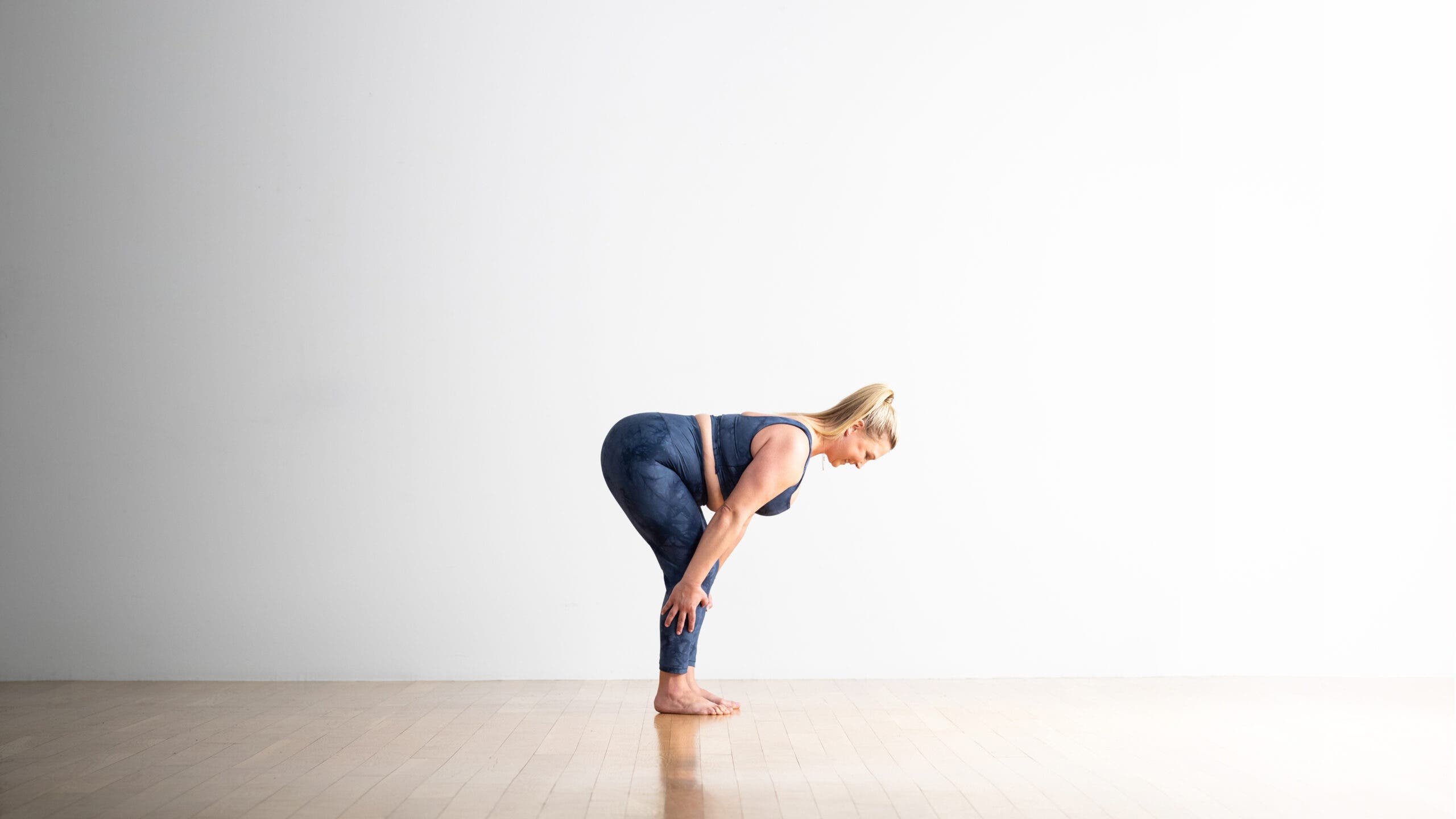
Ardha Uttanasana (Half Standing Forward Bend)
Inhale and push your fingertips down into the floor, straighten your elbows, then lift your front torso away from your thighs. Lengthen the front of your torso as you arch evenly along the entire length of your spine.
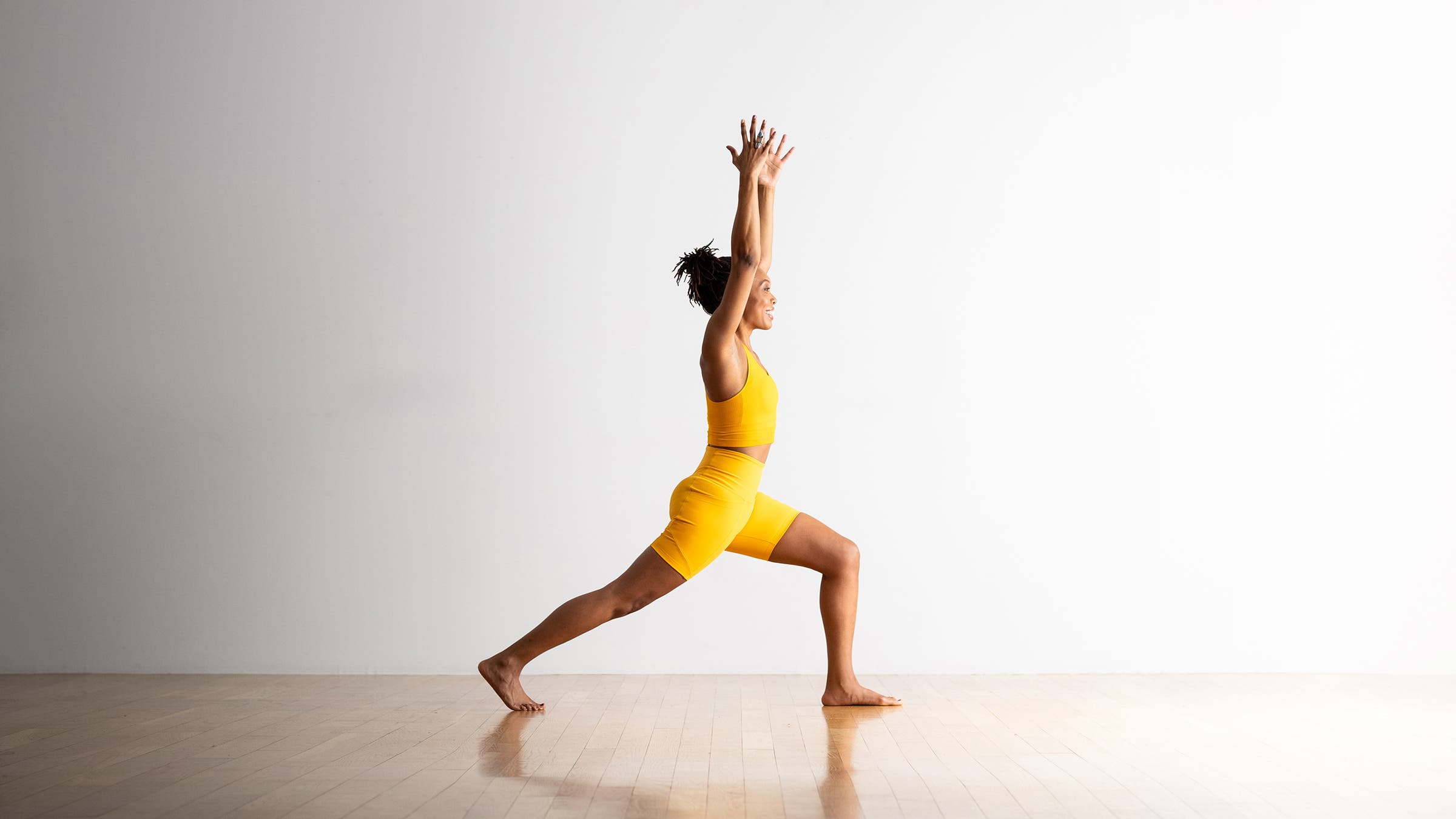
High Lunge
Exhale and step your right foot back into a lunge. Center your left knee over the heel so that your shin is perpendicular to the floor, and bring your left thigh parallel to the floor. Firm your tailbone against your pelvis and press your right thigh up against the resistance. Inhale, reach back through your right heel. Lengthen the torso along the front of the left thigh. Look forward without strain.
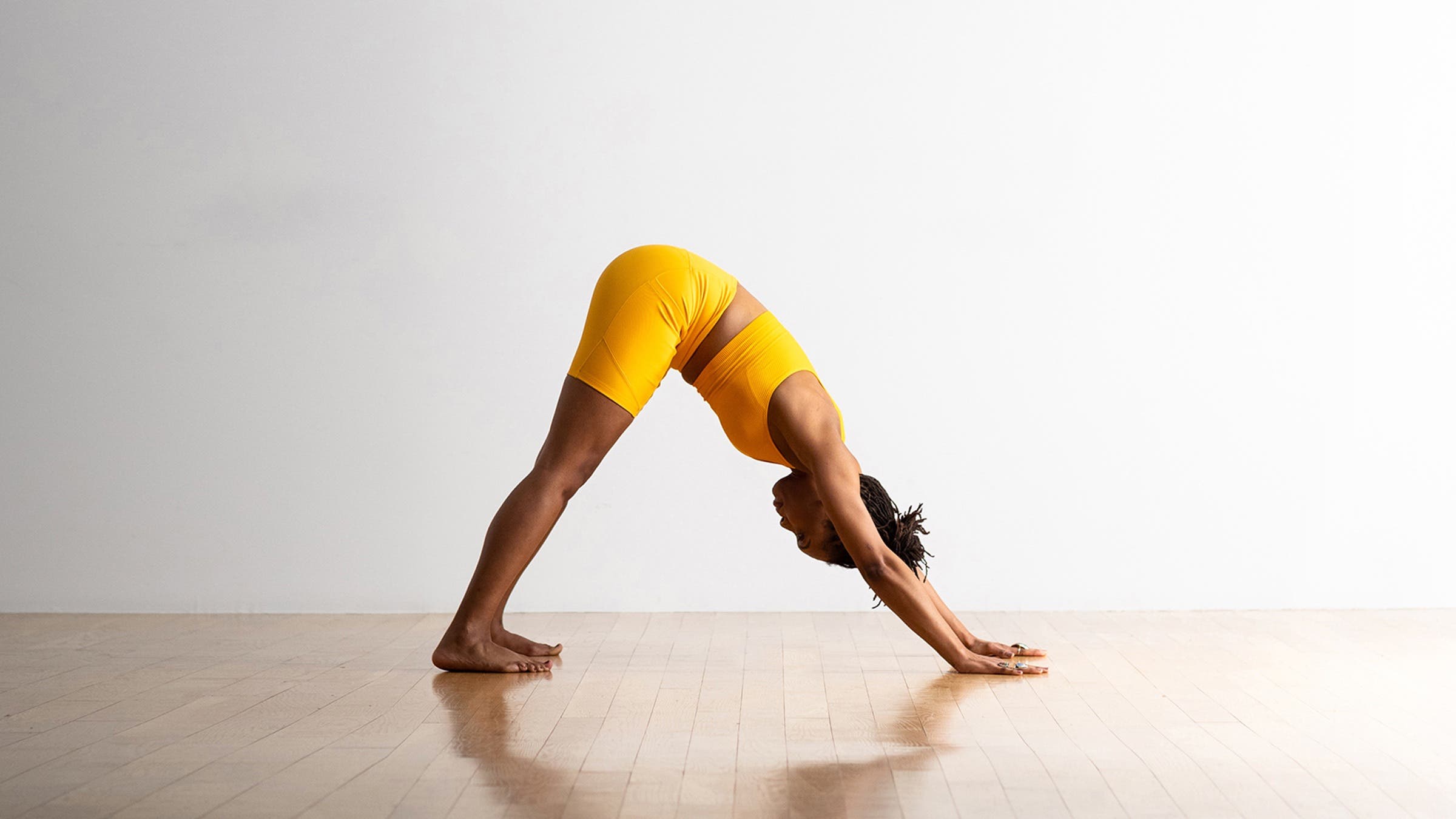
Adho Mukha Svanasana (Downward-Facing Dog Pose)
Exhale and step your left foot to Down Dog. Spread your palms and soles. Press the front of your thighs back as you press your inner hands firmly against the floor. Imagine that your torso is being stretched like a rubber band between the arms and legs.
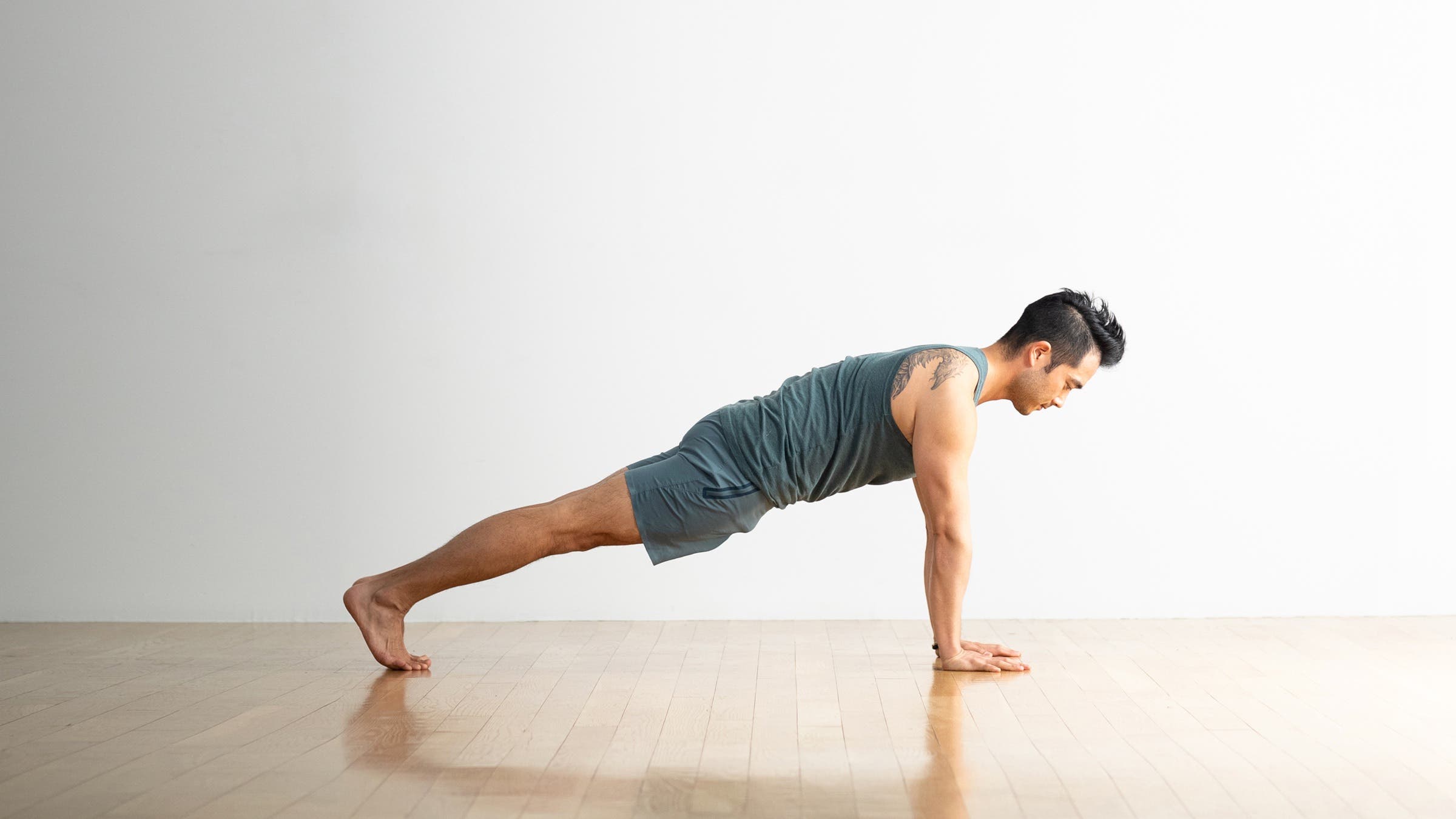
Plank
Inhale and bring your torso forward until your shoulders are over your wrists. Your arms will be perpendicular to the floor. Try not to let your upper back collapse between the shoulder blades: press your outer arms inward, and then—against this resistance—spread your shoulder blades apart. Firm your tailbone against your pelvis and press your thighs up.

Chaturanga Dandasana (Four-Limbed Staff Pose)
Exhale as you bend your elbows and lower down to Chaturanga with your torso and legs parallel to the floor. Keep your shoulders lifted up, away from the floor, and down, away from your ears. Lift the thighs away from the floor, lengthen your tailbone toward your heels, and draw the lower ribs away from the floor to avoid collapsing your lower back. Look down at the floor or slightly forward. If you can’t maintain your alignment, place your knees on the floor until you have built more strength.
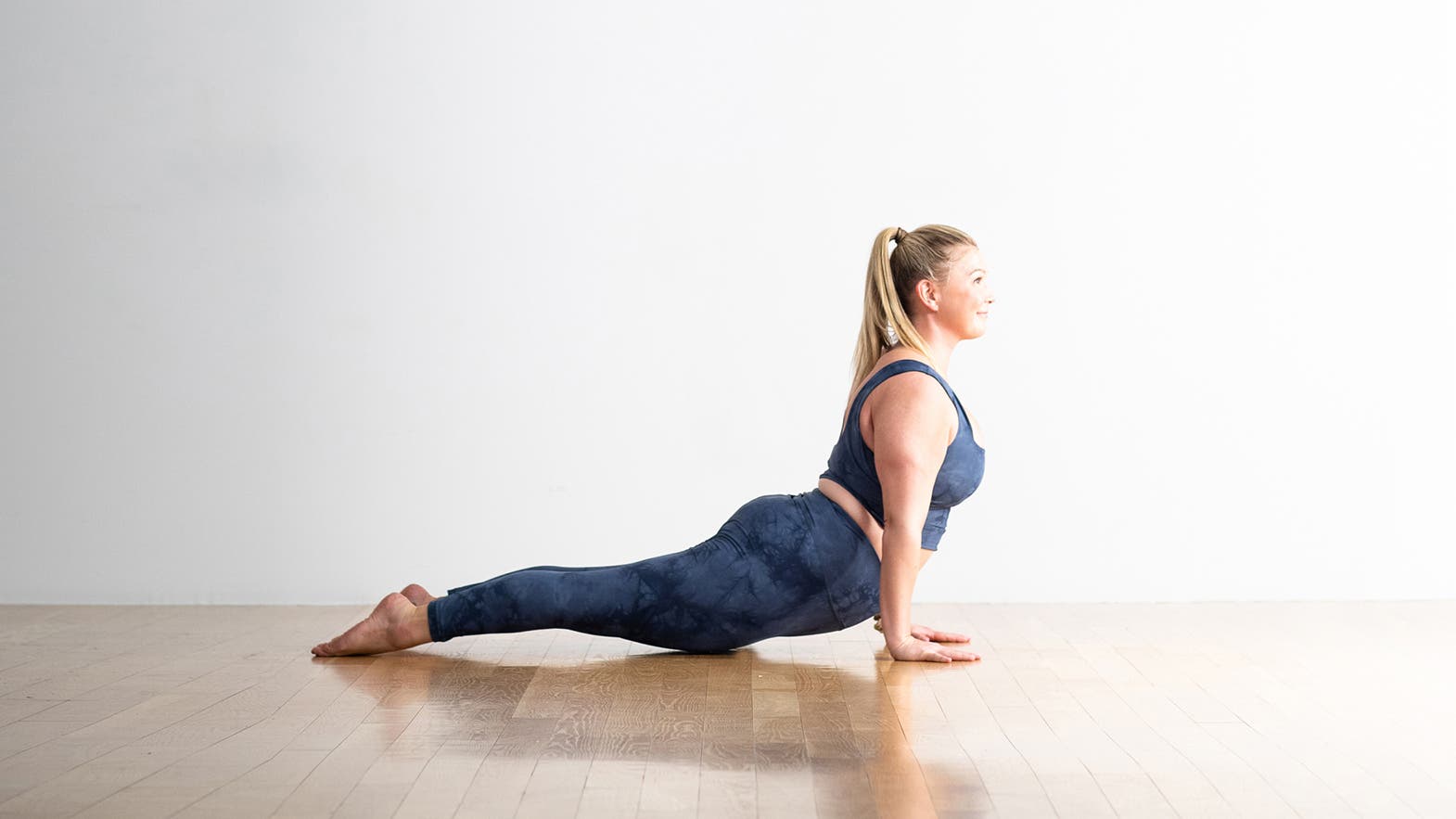
Urdhva Mukha Svanasana (Upward-Facing Dog Pose)
Inhale, straighten your arms, and sweep your chest forward into Up Dog. Keep your legs active, firm your tailbone toward your heels, and press your front thighs upward. Draw your shoulders away from your ears. Look straight ahead or look slightly upward.
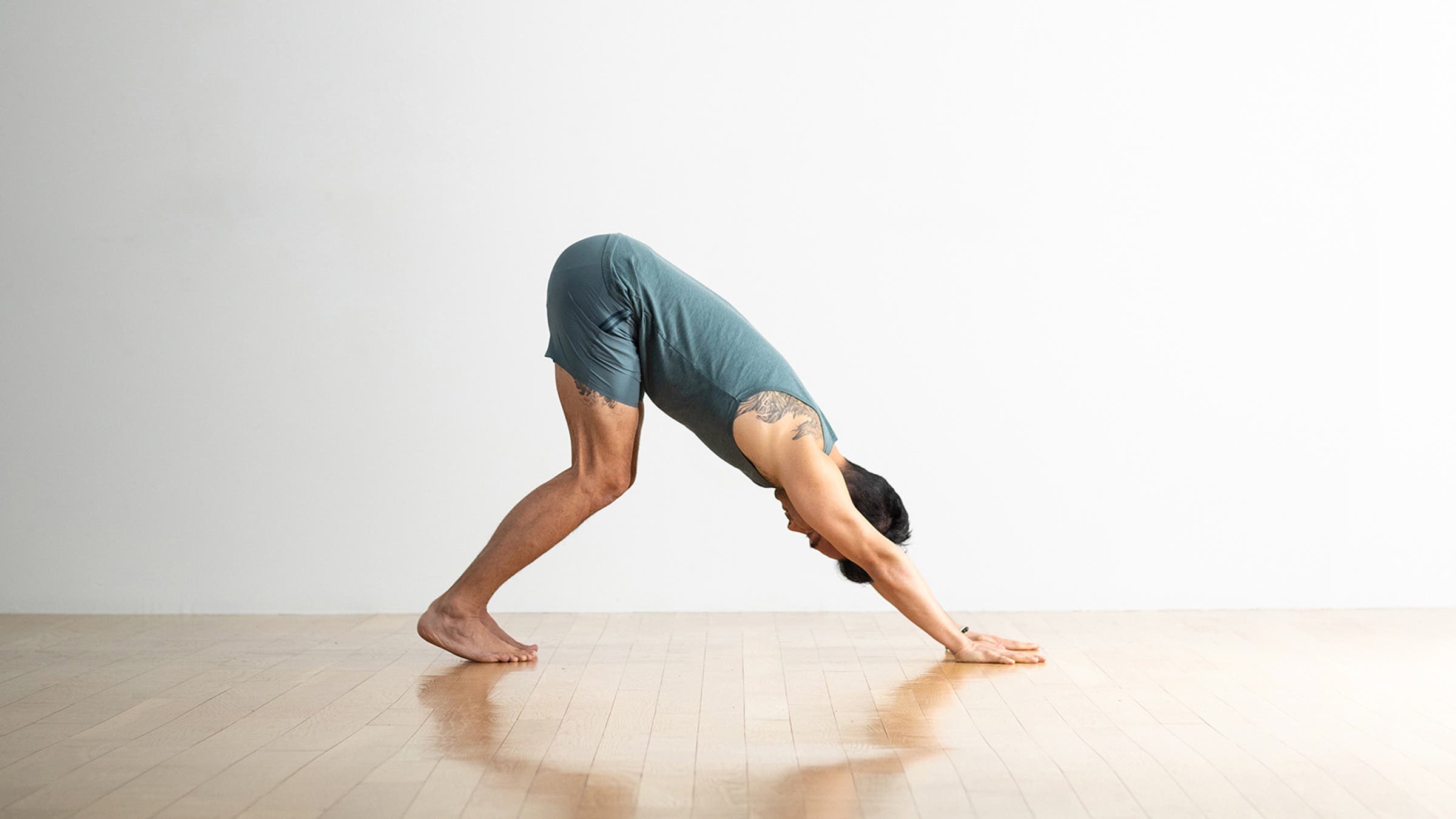
Adho Mukha Svanasana (Downward-Facing Dog)
Exhale back to Down Dog. To finish the Sun Salutation, step the right foot forward into a Lunge, then inhale into Ardha Uttanasana and exhale into Uttanasana. Inhale into Urdhva Hastasana and exhale to Tadasana. Observe your body and breath.
After You Finish
Rest Deeply: End by devoting at least 20 to 25 percent of your total practice time to Savasana (Corpse Pose).